Discover steep cliffs, tumbling waterfalls, varied birdlife, and abandoned farmsteads at the Geirangerfjord, Norway's most famous waterway.
On a clear day, the fjords of Norway have to be seen to be believed. There’s a reason the region is one of the world’s biggest cruising destinations, and a favourite of Norwegians staying at home for the summer.
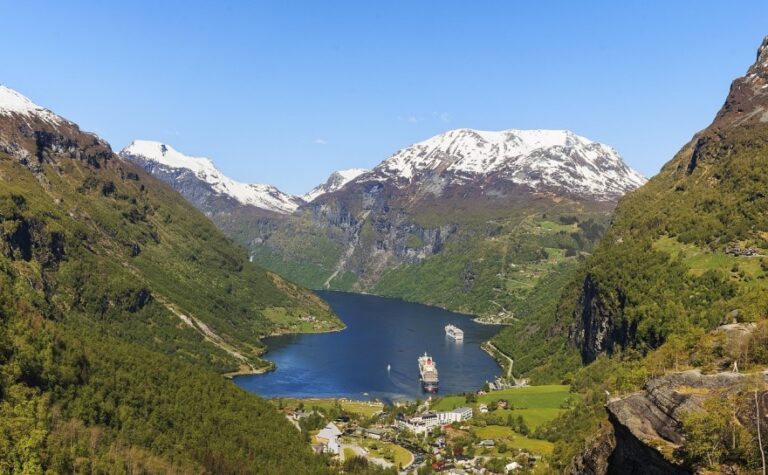
But even among the very best fjords of Norway, one stands apart. The Geirangerfjord is natural beauty at its very best, and a major attraction for Norway.
The 20km-long UNESCO World Heritage listed fjord carves through the dramatic central mountains, leaving near-vertical drops on both sides. Whether you’re taking it in from the roadside or from the water, it's one of the most famous images of Norway.
I’ll never forget the moment I turned a corner on the narrow mountain road and the fjord first came into view.
Planning a visit? From the natural beauty to things to do in and around the area, let's explore what the Geirangerfjord has to offer.
Location of the Geirangerfjord
The Geirangerfjord is located in the western part of Norway, within the Sunnmøre region of the Møre og Romsdal county.
This spectacular 15 km (9.5 miles) long fjord is a branch of the Sunnylvsfjorden, which is itself a branch off the Storfjorden, which offers a direct connection to the Norwegian Sea.
Geirangerfjord Travel Resources: Accommodation in Geiranger books up well in advance. To avoid disappointment, search for accommodation now. If you’re planning an independent visit, here are some recommended Geirangerfjord tours.
The Geirangerfjord lies approximately 300 kilometers (186 miles) northwest of Oslo, Norway's capital, providing a stark contrast to the urban landscape with its serene, natural beauty.
The fjord's position amidst the steep mountains and deep waters is a defining feature of Norway's dramatic fjord coastline, making it a pivotal part of the country's geographical and natural heritage.
Waterfalls
One of the most intiguing elements of sailing through the fjords region is the sheer number of fantastic waterfalls of all shapes and sizes.
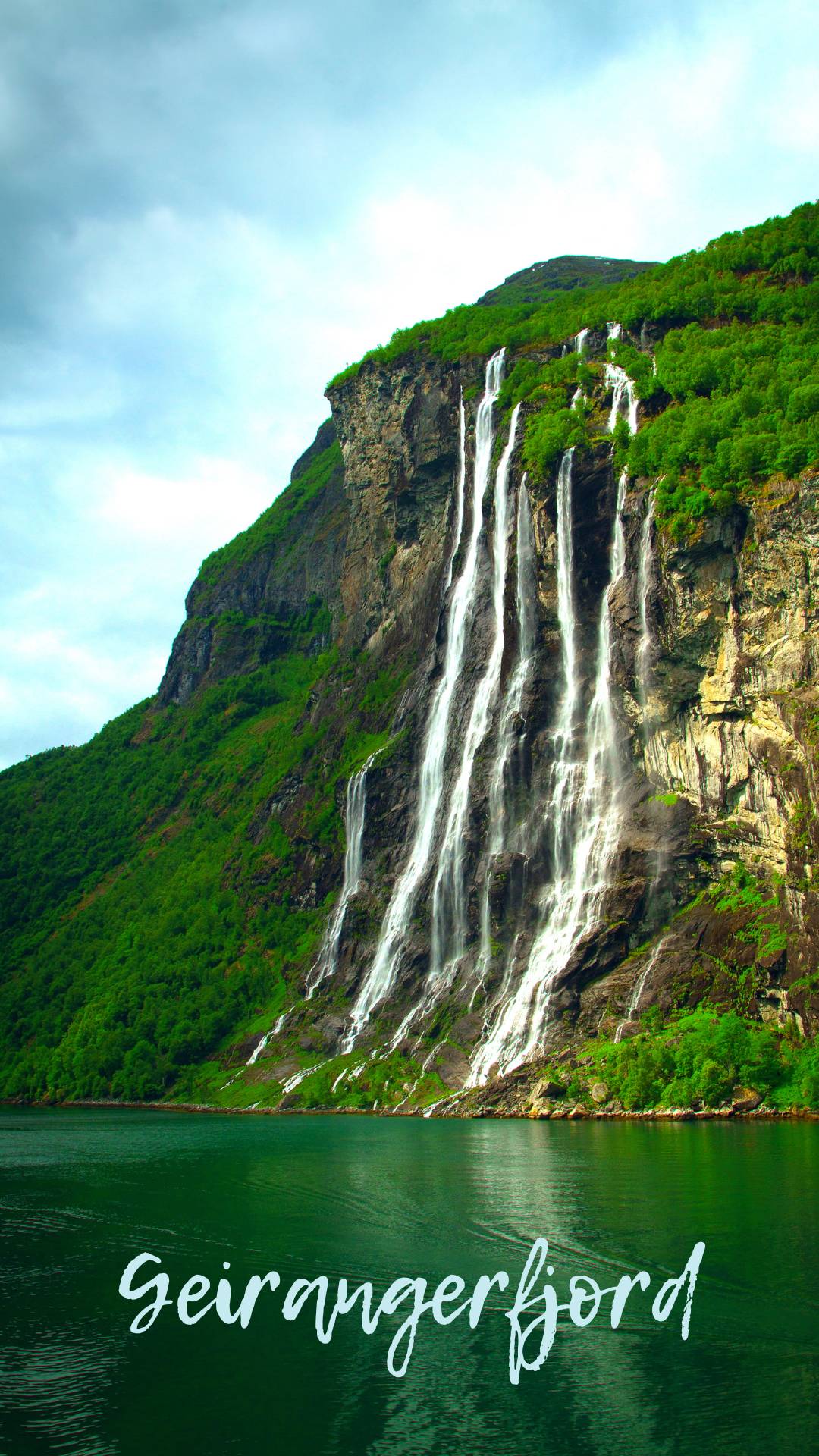
The most famous of the Geirangerfjord’s numerous waterfalls is the Seven Sisters (De syv søstrene). You won’t miss it.
This collection of seven narrow streams of water tumbling down the rocky cliff into the fjord from a height of 410 metres, including a freefall of up to 250 metres.
The waterfall's appearance varies seasonally and it can be anything from a slender beauty to raging torrents of water.
Mountain Farms
Just to the north of the Seven Sisters waterfall, the collection of timber farm buildings at Knivsflå were abandoned in 1898 due to the increasing risk of avalanche and falling rocks.
On the opposite side of the fjord and perched on a mountain ledge 270m (886ft) above the fjord, the Skageflå mountain farm achieved notoriety in 1993 when Norway’s King Harald and Queen Sonja celebrated their silver wedding anniversary at its secluded setting.
Only accessible via demanding hikes from Geiranger village or a steep climb from the fjord itself, the farm is kept relatively tourist-free.
The Best Viewpoints of the Geirangerfjord
There are three main viewpoints of the fjord in and around Geiranger. All three offer different perspectives on the natural landscape.
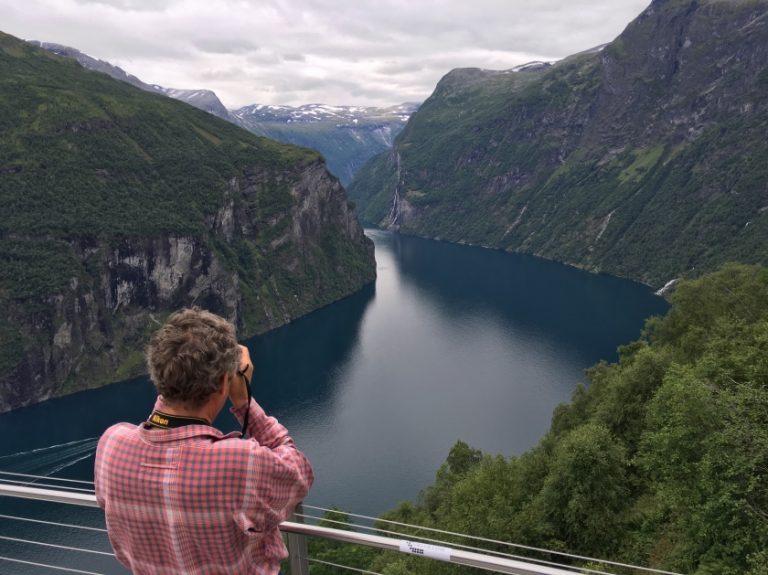
Ørnesvingen: If you are driving from Trollstigen along the National Scenic Route, you will descend towards Geiranger along a series of hairpin bends, each one bringing you closer to the fjord.
Pull over at the signed parking spots at Ørnesvingen, one of the highest bends where viewing platforms have been built. The sight is well worth it, but parking can be a challenge at busy times, so take care.
Ørnesvingen serves not only as a popular photo spot but also as a showcase of Norway’s engineering talent.
Flydalsjuvet: Many readers of the first edition of my Norway guidebook want to know where the iconic front cover image was taken. For the answer, head to Flydalsjuvet, a few miles above Geiranger village on the road signed to Stryn.
The view down to the village and the fjord from here is great, but for the iconic photograph you’ll need to make your way along an often-slippery 100-metre trail, and probably compete with hoards of other visitors.
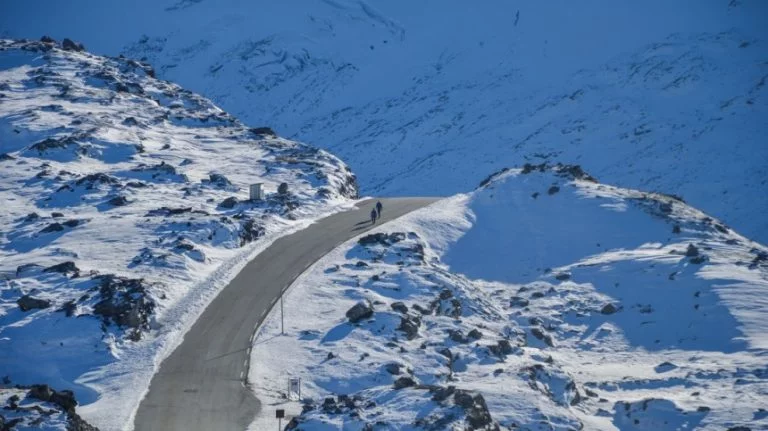
Dalsnibba: To truly appreciate the fjord in context with its surroundings, you need to drive up into the mountains, and then some! Dalsnibba viewpoint known as Geiranger Skywalk features a purpose-built walkway that isn’t for those with vertigo.
Driving? A narrow toll road is required to reach the viewpoint, which sits 1,476 meters (4,843 feet) above sea level.
Snow is commonplace here even during the height of summer, as are fog, mist, and clouds, so you may wish to wait on the weather conditions before deciding to make the trip.
Sightseeing Tours
In operation from March to October, the 65-minute Hellesylt to Geiranger car ferry doubles as a sightseeing cruise
The modern boat takes passengers up close to the famous waterfalls and mountain farms, with commentary given over the loudspeakers in Norwegian, English, and German.
Although expensive at NOK 600 (car plus driver, each additional passenger costs extra), it's a great way to combine sightseeing with a handy transport link. Without a car, a one-way trip costs NOK 349.
Cars, motorcycles, campers, RV, buses, bicycles, and kayaks are all welcome on board.
In addition to the car ferry, a sightseeing cruise leaves Geiranger several times during the day during high season, although the boat is often crammed with cruise ship visitors who have pre-booked tickets.
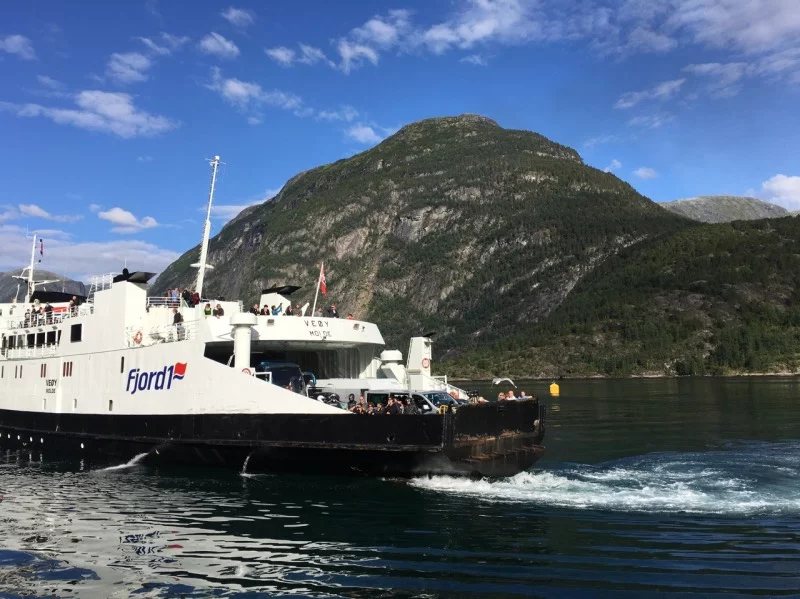
During high season, various bus tours of the region are also offered. These include transport to the viewpoints, along with scenic commentary.
Activities in the Geirangerfjord Region
In this majestic region, adventure and tranquility seamlessly blend. Relaxation is easy in such surroundings, but thrill-seekers needn’t miss out either. There’s so much to do for those who want to be more active.
Kayaking on the fjord's mirror-like waters allows visitors an up-close encounter with its stunning waterfalls and towering cliffs. Kayak tours to the Seven Sisters waterfall are a popular option.
Hiking trails wind through lush landscapes, offering breathtaking views at every turn, including views of the Seven Sisters and Bridal Veil falls. Popular hiking trails include those to the historic mountain farms.
Adrenaline enthusiasts can explore the fjord's surroundings by mountain bike or join guided rib boat tours for a more exhilarating take on the sightseeing experience.
Explore the Village of Geiranger
For several hours every single day of the summer, Geiranger is transformed from sleepy rural hideaway to chaotic tourist centre as enormous cruise ships and buses packed with visitors descend on the tiny hamlet.
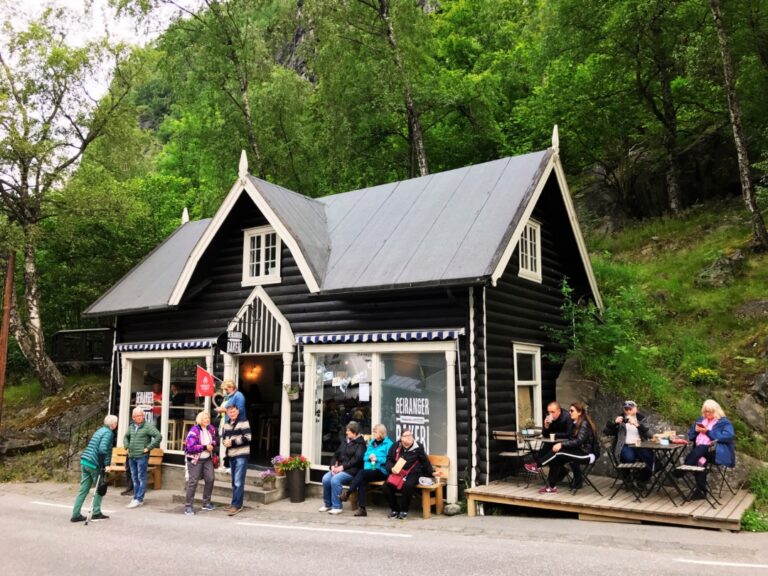
Despite its small size, the influx of tourists throughout the summer means there are a number of shops, restaurants and cafes to keep visitors occupied.
There's a small supermarket, which is great for those camping or on a road trip to stock up. Don’t miss the small chocolate factory and shop, which sells souvenirs and chocolates with intiguing flavours.
If you're not spending long in the fjord region, a quick visit to the Norwegian Fjord Centre is a worthwhile place to visit.
Here you'll learn more about how the fjords were created and how local people have adapted to the rural environment. It also reveals the story of why so many people left for America more than 100 years ago.
Finally, the Fjord Centre acts as a visitor centre for the entire West Norwegian Fjords UNESCO World Heritage site. You can learn about the listing and the ongoing preservation work in the area.
Hellesylt Village
Quieter than Geiranger (although still uncomfortable when a cruise ship docks), Hellesylt is a great alternative place to stop or stay.
The famous waterfall cuts the village in two. Visitors can get quite close to the raging waters on a couple of bridges and trails. The village has a couple of cafes and a small pizza restaurant that is popular while people wait for the ferry to Geiranger.
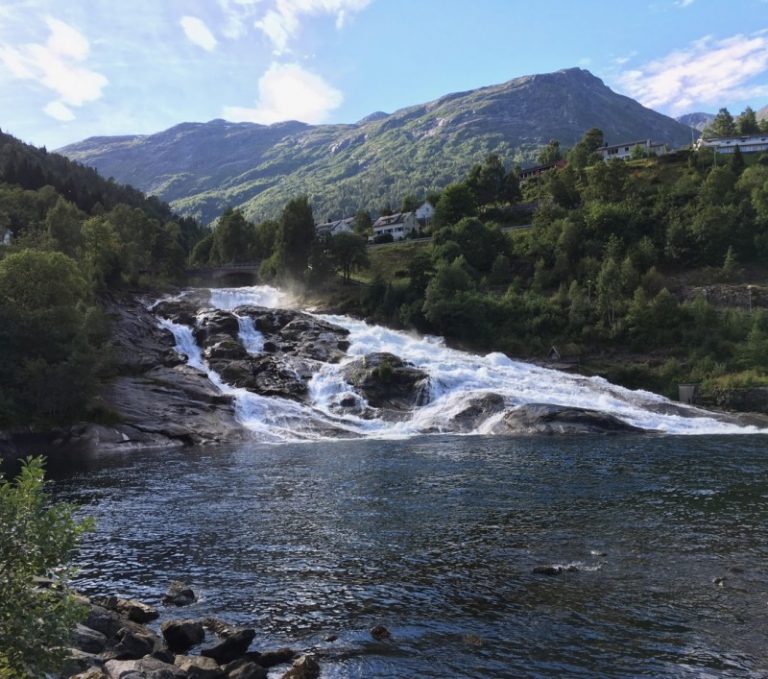
The pretty Sunnylven Church is also a popular stop, although it's a steep walk from the village centre.
Changes Coming to the Geirangerfjord
The future of tourism in the Geirangerfjord is set to embrace sustainability, with the Norwegian government's commitment to zero-emission transport significantly shaping this vision.
In order to preserve the pristine beauty of the Geirangerfjord and the rest of the UNESCO World Heritage listed area, the government will restrict access to only zero-emission ferries and ships.
To be introduced in 2026, the change will mean the end to big cruise ships being able to visit the Geirangerfjord. What impact this has on local facilities and attractions remains to be seen.
Where to Stay
Because of the rural nature of the region, accommodation is limited so you should book well in advance to secure your first choice. A couple of full-service hotels are dotted in and around the village, but otherwise you are limited to campgrounds.
Geirangerfjord Travel Resources: Accommodation in Geiranger books up well in advance. To avoid disappointment, search for accommodation now. If you’re planning an independent visit, here are some recommended Geirangerfjord tours.
But the Norwegian campgrounds may surprise you! Most have modern shared facilities for those staying in tents or motorhomes, while many have their own wooden cabins available for hire.
These are often cheaper than a hotel room yet offer more space and facilities.
Here are some handy links if you're searching for a place to stay in the area:
Did you enjoy this post? If you're planning a trip to Norway's most famous fjord, why not share your plans on Pinterest? We've got just the pin for you. Just hit those social sharing buttons.



Last year we spent a week in a cottage nearby Hellesylt and had hikes all around the area . Tremendous views. Want to go back.